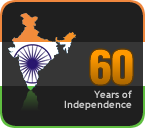Things were different a 100 years back. The first step in deciding the marriage is the exchange and matching of horoscopes. This system is also followed even today when it is an arranged marriage. One can get a horoscope from marriage brokers, or advertise in any of the newspapers. It was not so in those days. The girl’s father had to approach the boy’s father with his daughter’s horoscope and request the boy’s horoscope. After hearing from the girls’ side that the horoscopes matched, the boy’s people would approach their astrologer. The horoscopes were a means of knowing each other’s family tree and gothram. It was considered wrong for a boy and girl of the same gothram to get married. According to my limited knowledge, the matching of the horoscopes was to see that each had a different period of good and bad dasas – so that one could shelter the other one in difficult dasas.
In my mother’s case she got married when she was eight in 1902. It was my paternal grandfather, an advocate who approached my mother’s father, a schoolmaster, for my mother’s horoscope. He was much impressed by my mother’s family, their general behaviour and my mother’s own conduct, for both sets of grandparents lived in the same street. My mother never forgot this unusual act of my Paatta. She always used to say that my parents as well as all their children are well settled in life due to Paatta’s blessings. We the grandchildren never knew our Patta. He died some six years after our parents got married, and just before my parents started their married life.

My third sister and her husband - this photograph
was taken in a studio in Trichy in 1940, a year after her wedding.
was taken in a studio in Trichy in 1940, a year after her wedding.
Once the horoscopes were matched, and both sides happy, the next step was to fix a wedding date. There were no questions asked about dowry, no cash exchanged hands. The ornaments for the bride including the thirumangalyam, or the thali (mangalasutra), were taken care of by both sets of parents. There was no boy-meet-girl also. Everything was decided by the parents. But things progressed a little bit as time went by. In 1927, when my eldest sister got married, it was her mother-in-law with her sister who came to see the girl. My sister was barely twelve years old at that time. More changes happened when my two other sisters got married in the late 1930s. They had the chance to see their life partners before getting married – they even had a chance to say ‘Yes’ or ‘No’, though anyone hardly used that option, because the parents’ decision was final.
When Babuji and I got married in 1945, we saw each other only after the wedding date was fixed.
My father-in-law and his elder brother came to see me. My husband who was working in Delhi only had a short leave to attend his own wedding.
More to come...






2 comments:
Lovely piece, Maiji, and the photographs are just so charming.
devika looks so much like the sister on leftside:).what interesting posts.
Post a Comment